Pendant Lights for Room Decoration: Enhance Your Space with Stylish Illumination
Pendant lights are a popular choice for room decoration due to their versatility and ability to create a statement. These lights hang from the ceiling and come in a variety of styles, sizes, and colors, making it easy to find one that fits any room’s decor. Pendant lights can be used in any room of the house, including the kitchen, dining room, living room, and bedroom.
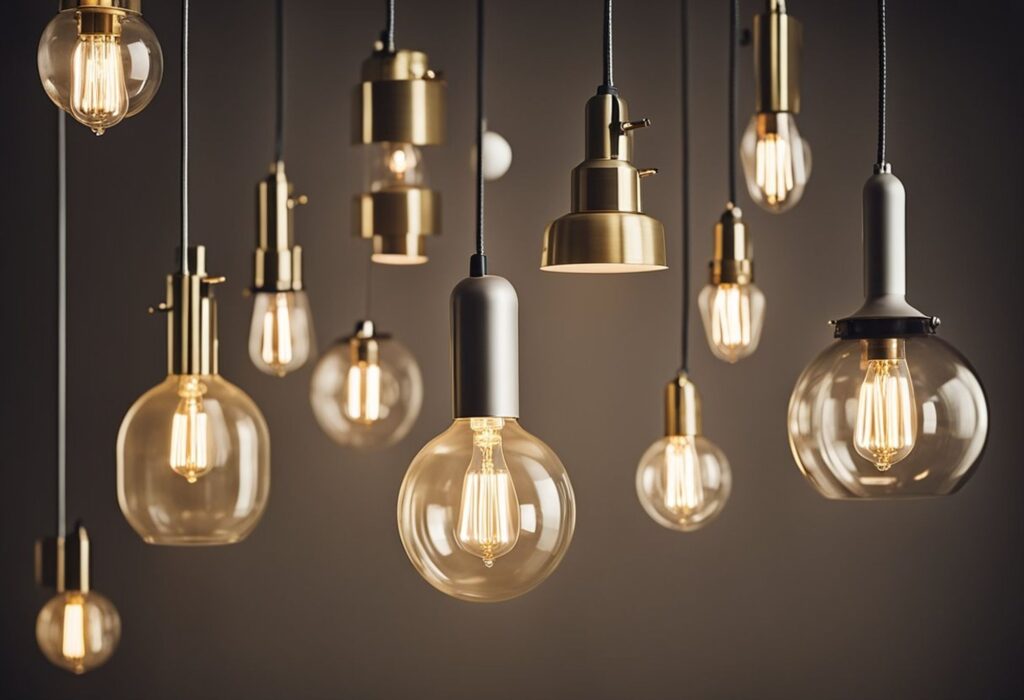
There are many types of pendant lights available, including mini pendants, bowl pendants, and drum pendants, each with their own unique characteristics and benefits. Mini pendants are small and versatile, making them ideal for use in multiples or in smaller spaces. Bowl pendants are larger and provide more direct light, making them great for use in dining rooms and kitchens. Drum pendants are a popular choice for living rooms and bedrooms due to their soft, diffused light.
Key Takeaways
- Pendant lights are a versatile and stylish option for room decoration.
- There are several types of pendant lights available, including mini, bowl, and drum pendants.
- Choosing the right pendant light for a room depends on factors such as size, style, and function.
Types of Pendant Lights
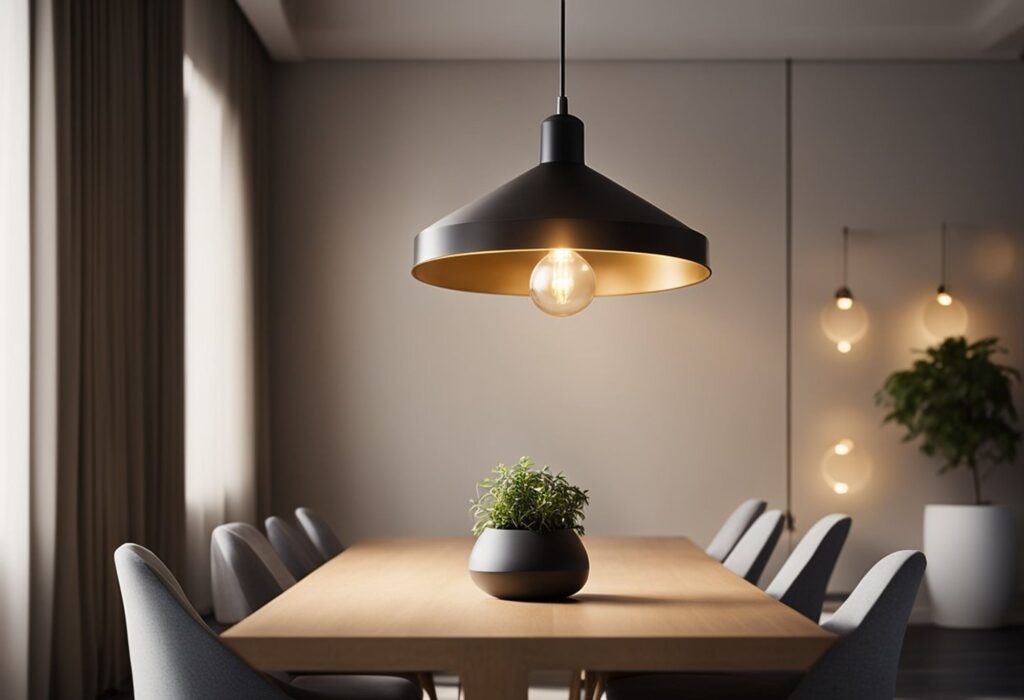
Pendant lights come in various shapes, sizes, and styles, making them a versatile choice for any room. Here are some of the most popular types of pendant lights:
Drum Pendant Lights
Drum pendant lights are a popular choice for many homeowners. They feature a cylindrical shade that resembles a drum, hence the name. These lights are available in a variety of materials, including fabric, metal, and glass. They can be used to create a cozy and intimate atmosphere in a bedroom or living room.
Globe Pendant Lights
Globe pendant lights feature a spherical shade that diffuses the light in all directions. They are available in a variety of sizes and materials, including glass, metal, and plastic. These lights are a great choice for modern and contemporary interiors.
Mini Pendant Lights
Mini pendant lights are a smaller version of traditional pendant lights. They are perfect for small spaces or for use in multiples over a kitchen island or dining table. These lights are available in a variety of styles and materials, including glass, metal, and crystal.
Linear Pendant Lights
Linear pendant lights feature a long, narrow design that is perfect for use over a kitchen island or dining table. They are available in a variety of styles and materials, including metal, glass, and crystal. These lights are a great way to add a modern touch to any room.
Abstract Pendant Lights
Abstract pendant lights feature a unique and artistic design that can add a touch of whimsy to any room. They are available in a variety of materials, including metal, glass, and plastic. These lights are a great way to add a pop of color and personality to your decor.
In conclusion, pendant lights are a versatile and stylish choice for any room. With so many styles and materials to choose from, there is sure to be a pendant light that will fit your design aesthetic.
Choosing the Right Pendant Light
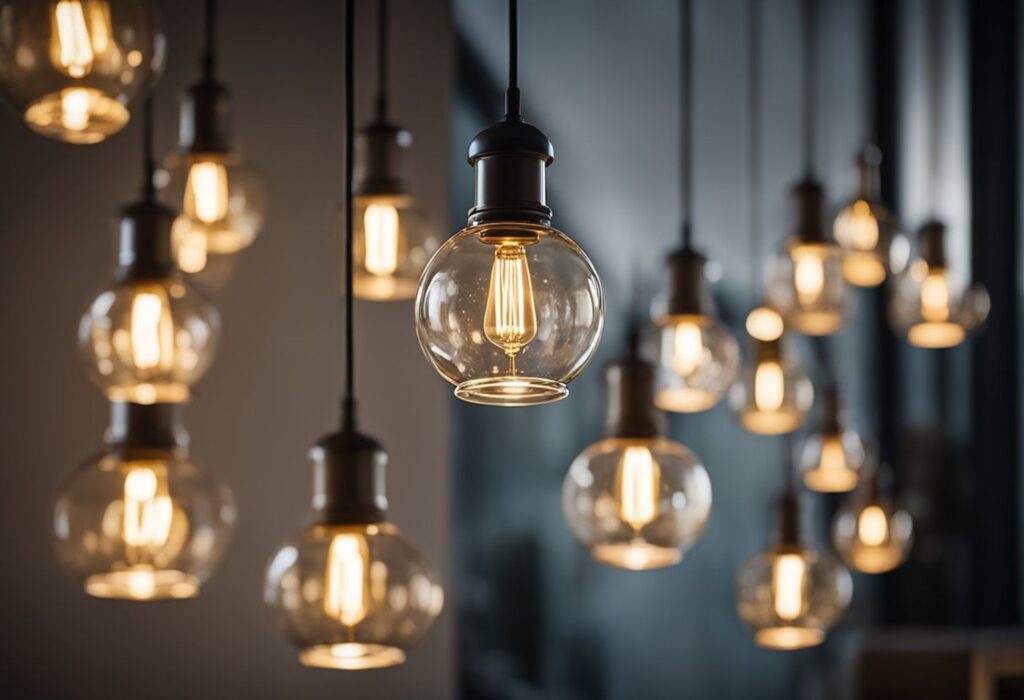
When it comes to choosing the right pendant light for a room, there are several factors to consider. Pendant lights are a versatile lighting option that can add style, ambiance, and functionality to any space. In this section, we will discuss how to choose the right pendant light by room purpose, decor style, and light intensity.
By Room Purpose
Different rooms in a house require different types of lighting. Pendant lights can be used in various rooms, including the kitchen, dining room, living room, bedroom, and bathroom. In the kitchen, pendant lights can be used to provide task lighting above the island or countertop. In the dining room, a pendant light can create a focal point above the table. In the living room, pendant lights can be used to provide accent lighting or create a cozy atmosphere. In the bedroom, pendant lights can be used as bedside lighting or to create a relaxing ambiance. In the bathroom, pendant lights can be used to provide task lighting above the vanity.
By Decor Style
Pendant lights come in a variety of styles, including modern, industrial, bohemian, and traditional. When choosing a pendant light, it is important to consider the decor style of the room. For example, a modern pendant light would look out of place in a traditional room. A bohemian pendant light would not fit well in an industrial room. It is essential to choose a pendant light that complements the decor style of the room.
By Light Intensity
Pendant lights can provide different levels of light intensity, depending on the type of shade or bulb used. For example, a bowl pendant light can direct light downward or provide ambient lighting, while a drum pendant light emits a softer light and is perfect for creating a calming ambiance. Mini pendant lights are smaller in size and are perfect for accent lighting. It is important to choose a pendant light that provides the right level of light intensity for the room’s purpose.
In conclusion, choosing the right pendant light involves considering the room’s purpose, decor style, and light intensity. By taking these factors into account, one can choose a pendant light that not only provides the right amount of light but also adds style and ambiance to the room.
Installation Tips

Proper Height Placement
When installing pendant lights, it is essential to consider the height placement for optimal functionality and aesthetic appeal. According to Bob Vila, the bottom rim of the pendant should hang 60 to 66 inches from the floor. The bottom of the pendant should be approximately 30 inches above the counter or table surface. For dining rooms, pendants should be hung 30-34 inches above the table, adding three additional inches for each extra foot of ceiling height. In a foyer, pendant lights should be hung no lower than 7 feet from the floor. For 2-story entrances, try not to hang lower than the second floor.
Wiring and Safety
Before beginning any electrical work, it is crucial to turn off the power supply to the fixture. Locate the circuit breaker or fuse box and switch off the circuit that powers the light. According to LightColored, it is recommended to use a voltage tester to ensure that the power is off.
When wiring the pendant light, it is essential to follow the manufacturer’s instructions carefully. The wires should be connected according to color codes: black to black, white to white, and green or bare copper to the ground screw. The wires should be securely connected with wire nuts and wrapped with electrical tape.
Adjusting Chain and Cord Length
If the pendant light comes with an adjustable chain or cord, it is crucial to adjust it to the desired length before installation. According to DIY Interiors, the chain or cord should be adjusted so that the bottom of the pendant is at the proper height. Once the chain or cord is adjusted, it should be secured with pliers or wire cutters to prevent it from slipping.
In summary, installing pendant lights requires careful consideration of height placement, wiring, and safety. By following the manufacturer’s instructions and taking the necessary safety precautions, homeowners can enjoy the beauty and functionality of pendant lights in their home decor.
Lighting Design Principles
When it comes to pendant lights, the right lighting design can make all the difference in creating an inviting and functional space. Here are a few key principles to keep in mind when designing the lighting for a room.
Layering Light
One of the most important principles of lighting design is layering light. This involves using multiple sources of light to create a balanced and visually interesting space. Pendant lights can serve as one layer of light, but it’s important to incorporate other types of lighting as well. This can include ambient lighting, like overhead fixtures or wall sconces, as well as task lighting, like table lamps or under-cabinet lighting.
Color Temperature
Another important consideration when designing lighting is color temperature. This refers to the warmth or coolness of the light, measured in Kelvins. Pendant lights come in a range of color temperatures, from warm yellow to cool blue. The right color temperature can help set the mood of a room and enhance its overall aesthetic. For example, warm yellow light can create a cozy and inviting atmosphere, while cool blue light can lend a modern and sophisticated feel.
Lighting Zones
Finally, it’s important to consider lighting zones when designing the lighting for a room. This involves dividing the room into different areas and using different types of lighting to highlight each zone. Pendant lights can be used to create focal points in each zone, while other types of lighting can be used to provide overall illumination. By carefully considering lighting zones, designers can create a space that is both functional and visually appealing.
Maintenance and Upkeep
Cleaning Techniques
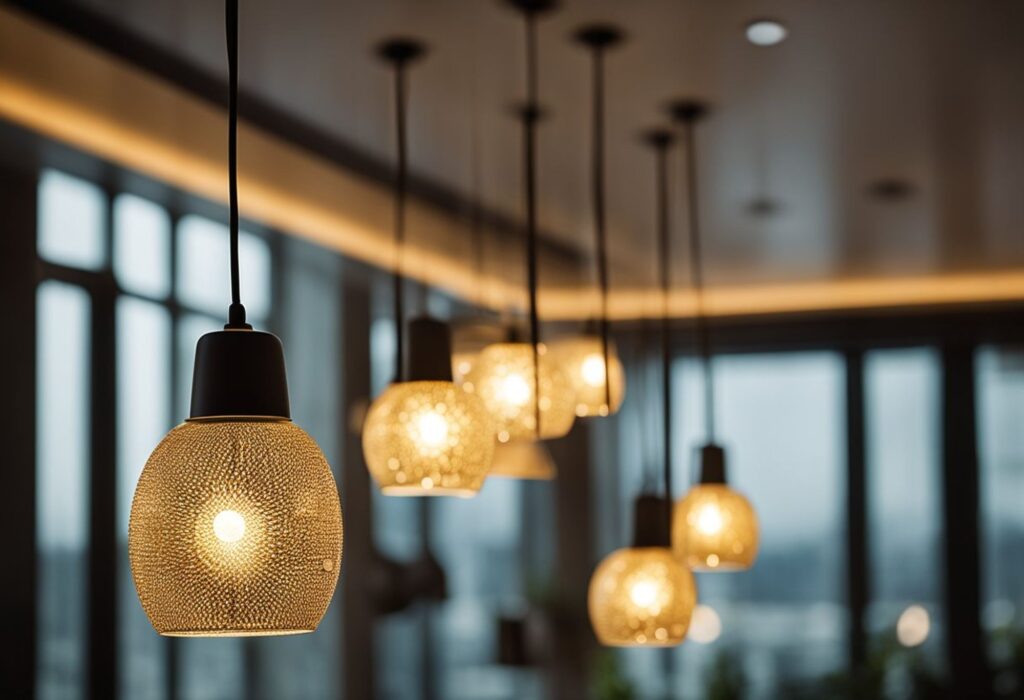
Pendant lights are an excellent addition to any room, but they require regular cleaning to maintain their beauty and functionality. Dust, dirt, and grime can accumulate on the surface of the light fixture, which can reduce its brightness and affect its appearance. Therefore, it is essential to clean the pendant light regularly to keep it in good condition.
To clean the pendant light, turn off the power supply and let the bulb cool down. Then, use a soft cloth or a feather duster to wipe the surface of the light fixture gently. If the pendant light has glass shades, use a glass cleaner and a soft cloth to remove any stubborn stains or fingerprints. Avoid using abrasive cleaners or scouring pads as they can scratch the surface of the pendant light.
Bulb Replacement
Another essential aspect of pendant light maintenance is to replace the bulbs regularly. Over time, the bulbs can become dim or burn out, which can affect the quality of light in the room. To replace the bulb, turn off the power supply and let the bulb cool down. Then, remove the old bulb and replace it with a new one of the same wattage and size. Make sure to handle the bulb carefully to avoid damaging it or injuring yourself.
Regular Inspections
Regular inspections are also crucial to ensure that the pendant light is functioning correctly. Check the electrical connections and wiring periodically to ensure that they are secure and not damaged. If you notice any frayed wires or loose connections, turn off the power supply immediately and call a qualified electrician to repair the pendant light.
In conclusion, maintaining a pendant light is not difficult, but it requires regular cleaning, bulb replacement, and inspections. By following these simple maintenance tips, you can keep your pendant light in good condition and enjoy its beauty and functionality for years to come.
Frequently Asked Questions
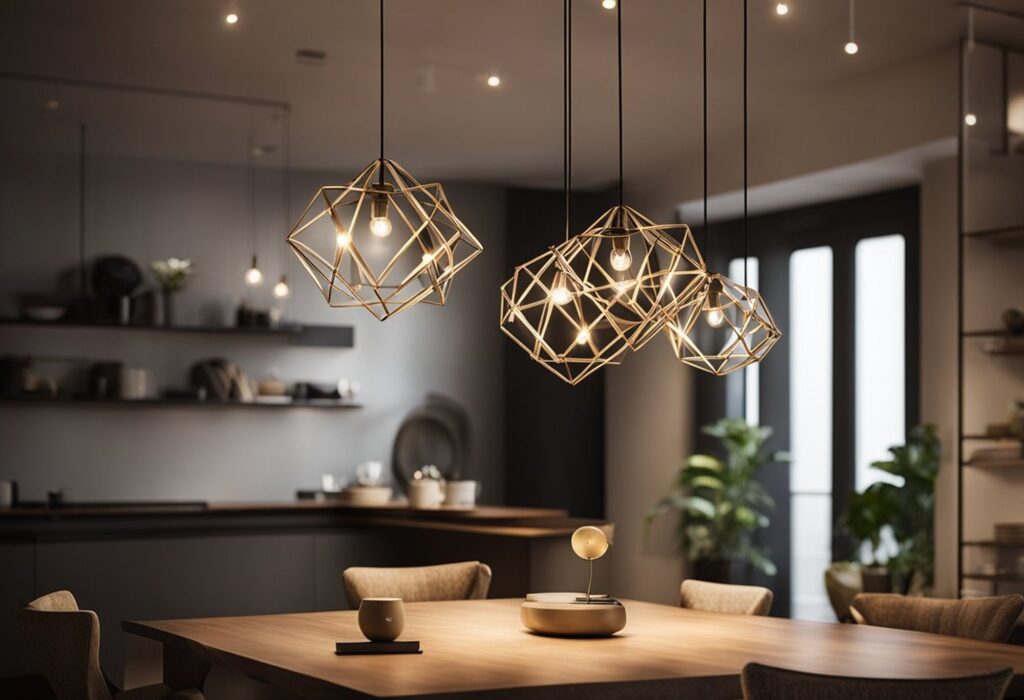
How do I choose the right size pendant light for my room?
Choosing the right size pendant light for a room is crucial to achieving a balanced and stylish look. As a general rule, the diameter of the pendant light should be about one-third the width of the surface it is illuminating. For example, if the pendant light is being installed over a dining table that is 36 inches wide, the pendant light should be about 12 inches in diameter. It is also important to consider the height of the pendant light, which should be at least 30 inches above the surface it is illuminating.
What are the latest trends in pendant lighting for home decor?
Pendant lighting is a versatile and stylish option for home decor, and there are many trends to choose from. One popular trend is the use of oversized pendant lights, which can make a bold statement in a room. Another trend is the use of geometric shapes, such as hexagons and triangles, in pendant light design. Additionally, the use of natural materials, such as wood and rattan, is becoming increasingly popular in pendant light design.
Can pendant lights be installed in rooms with low ceilings?
Pendant lights can be installed in rooms with low ceilings, but it is important to choose the right type of pendant light. Flush mount pendant lights are a good option for low ceilings, as they are designed to be installed close to the ceiling. Mini pendant lights are also a good option for low ceilings, as they are smaller in size and do not take up as much space.
How do you properly position pendant lights over a living area?
Properly positioning pendant lights over a living area is important to achieve the right amount of light and ambiance. As a general rule, pendant lights should be installed about 30 inches above the surface they are illuminating, such as a coffee table or seating area. It is also important to consider the size and shape of the pendant light, as well as the overall design of the living area.
What type of bulb is best for pendant lights in a bedroom setting?
The type of bulb that is best for pendant lights in a bedroom setting depends on the desired ambiance and level of brightness. Soft white bulbs are a good option for creating a cozy and relaxing atmosphere, while daylight bulbs are better for providing bright and clear light. LED bulbs are also a good option for pendant lights, as they are energy-efficient and long-lasting.
How can pendant lighting be used to enhance the ambiance of a room?
Pendant lighting can be used to enhance the ambiance of a room in many ways. For example, pendant lights with dimmer switches can be adjusted to create the desired level of brightness and mood. Pendant lights with unique and eye-catching designs can also serve as a focal point in a room and add to the overall ambiance. Additionally, pendant lights can be used to highlight specific areas of a room, such as a piece of artwork or a seating area.
Upgrade Your Room with Stunning Pendant Lights from Buyamia!
Explore our exclusive range of pendant lights, designed to add elegance and ambiance to any space. Whether you’re aiming for a modern or traditional look, find the perfect pendant light to complement your room decor. Click here to discover our collection and illuminate your home with style!

Leave a Reply